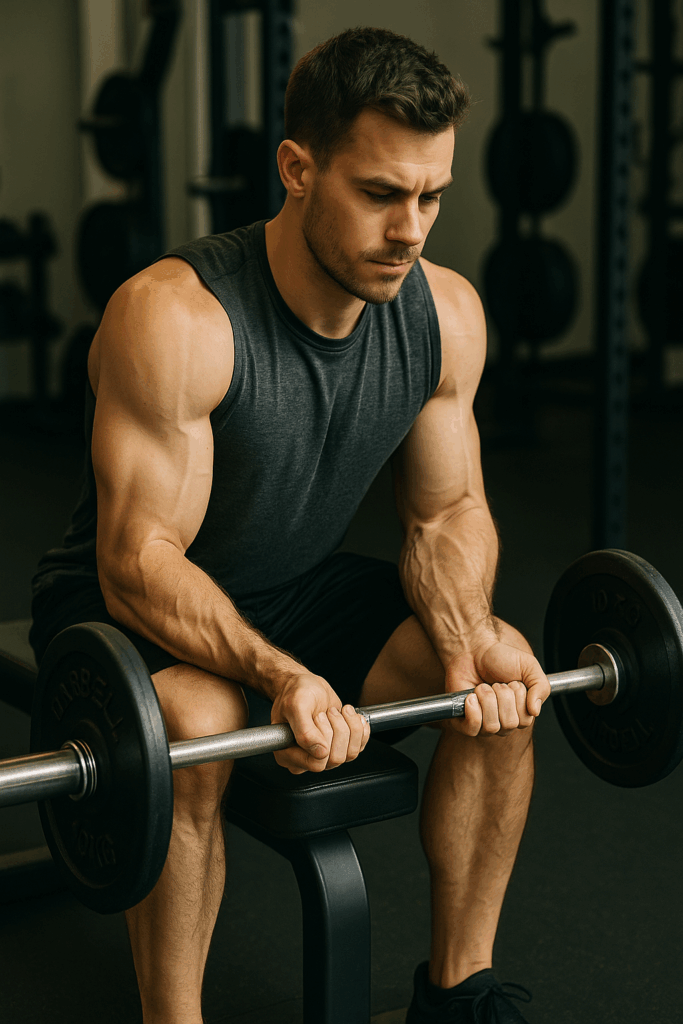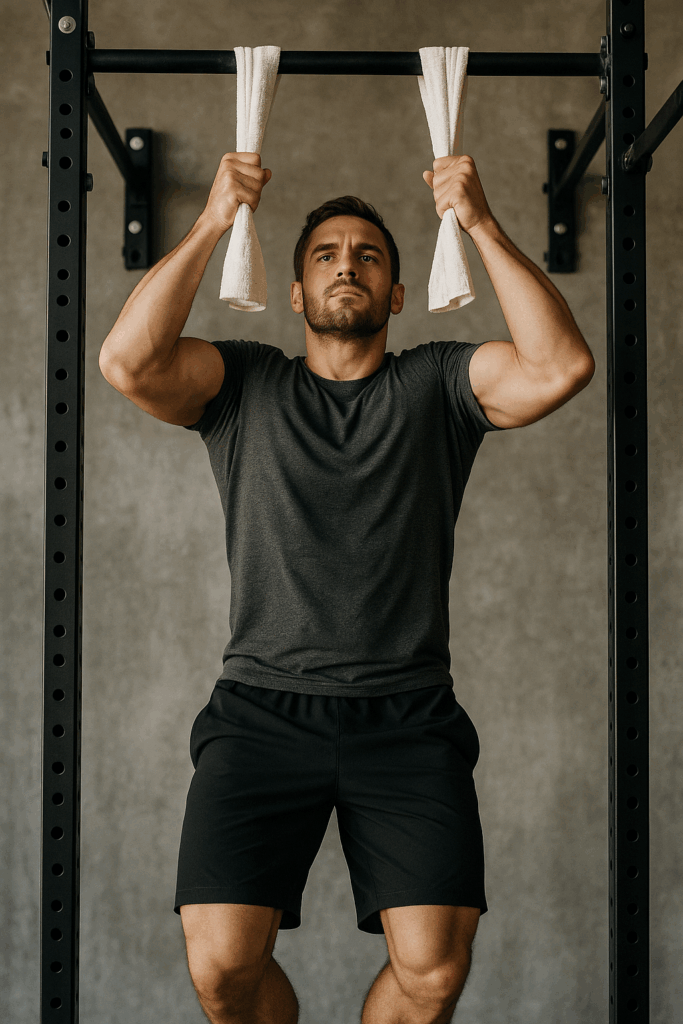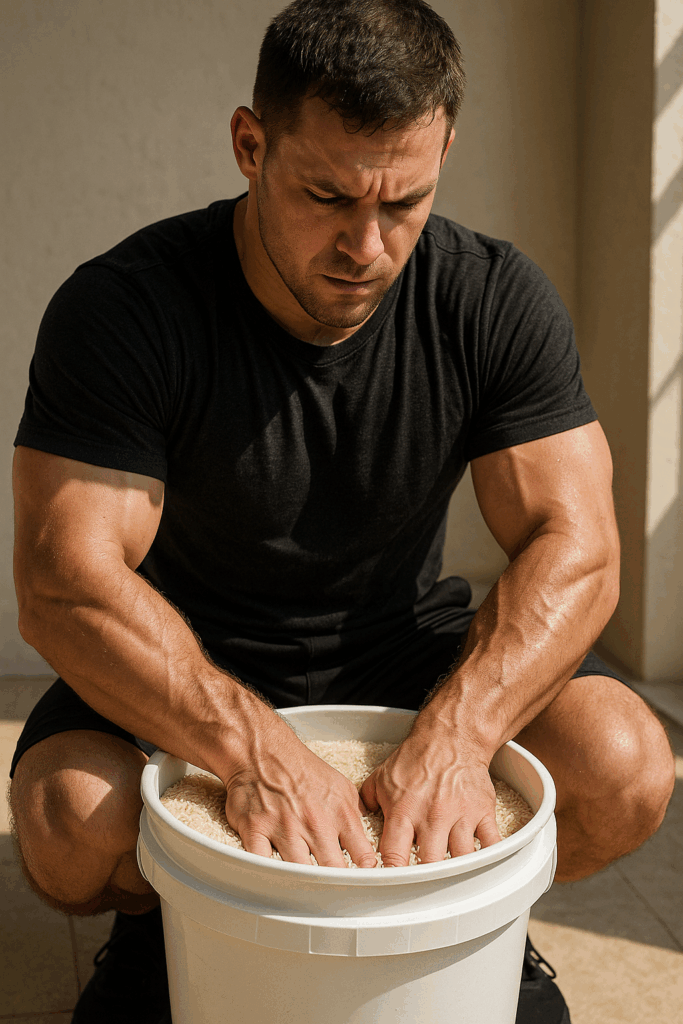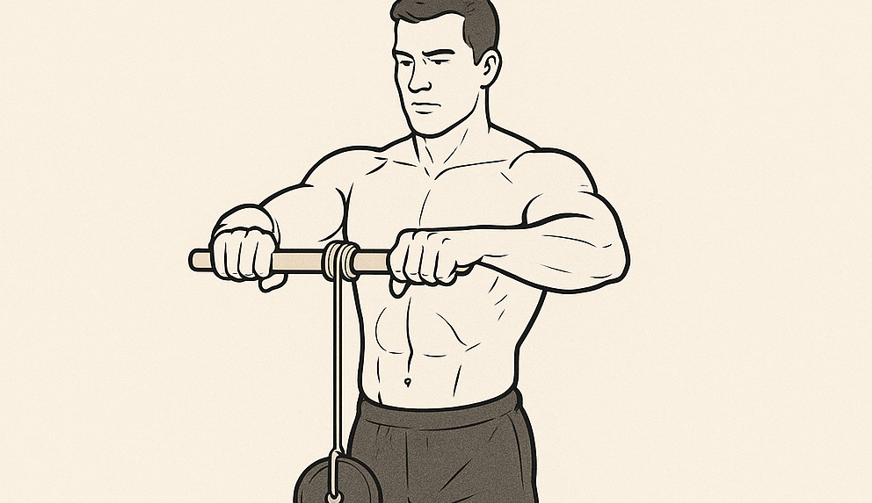If you’re hitting the gym regularly but still struggling to increase forearm size, you’re not alone. Many fitness enthusiasts build bulky biceps and triceps but overlook or undertrain their forearms. Yet, thick, vascular forearms not only look impressive but also improve grip strength and overall athletic performance.
Such as in this comprehensive guide, we’ll dive into how to grow your forearms fast with the right workouts, nutrition, and recovery strategies. Whether you’re a beginner or a seasoned lifter, these expert tips will help you see real results.
Why Forearm Development Matters
Before we get into the exercises and training tips, let’s understand why forearm hypertrophy is crucial such as:
- Improved Grip Strength: Essential for lifting heavier in deadlifts, rows, pull-ups, and more.
- Aesthetic Balance: Such as big forearms complete the muscular look — small forearms with big biceps can look unbalanced.
- Functional Strength: Useful in sports like climbing, wrestling, and combat sports.
Anatomy of the Forearm: Know What You’re Training
Understanding the forearm’s muscle groups can help you train more effectively:
- Flexors – Such as located on the palm side; responsible for wrist and finger flexion.
- Extensors – Located on the top side; responsible for wrist and finger extension.
- Brachioradialis – Such as runs across the upper forearm; important for forearm thickness.
Such as targeting all three areas ensures maximum growth and a more complete look.
Best Exercises to Increase Forearm Size (Extended Version)
Building impressive forearms requires more than a few wrist curls at the end of your workout. Such as to maximize hypertrophy (muscle growth) and improve grip strength, you need to train the forearms directly and with variety. Such as below is a comprehensive breakdown of the most effective exercises, complete with variations, cues, sets/reps, and progression strategies.
Barbell Wrist Curls

Target: Wrist flexors (palmar side of the forearm)
Equipment: Such as barbell or dumbbells
How to Do It:
- Sit on a bench and hold a barbell with an underhand (supinated) grip.
- Such as rest your forearms on your thighs or a bench so that your wrists hang off the edge.
- Let the bar roll down to your fingers, then curl it back up by flexing your wrists.
- Squeeze at the top for 1–2 seconds before lowering.
Training Tips:
- Keep forearms stable; only the wrists should move.
- Such as focus on slow negatives to build eccentric strength.
- Use wrist wraps only if absolutely necessary.
Sets/Reps: 3–4 sets of 12–20 reps
2. Reverse Barbell Wrist Curls

Target: Wrist extensors (top of the forearm)
Equipment: Such as barbell or dumbbells
How to Do It:
- Use an overhand (pronated) grip on the barbell.
- Such as rest forearms flat on your thighs or a bench with wrists extended over the edge.
- Raise the weight by extending the wrists upward.
- Such as lower slowly for maximum time under tension.
Training Tips:
- Don’t go too heavy—control matters more here.
- Such as helps balance out overdeveloped flexors and prevents tendonitis.
Sets/Reps: 3 sets of 12–15 reps
3. Hammer Curls

Target: Brachioradialis (outer forearm) and biceps
Equipment: Such as dumbbells or resistance bands
How to Do It:
- Stand with dumbbells at your sides using a neutral grip (palms facing each other).
- Curl the weights up while keeping the palms in the same neutral position.
- Such as lower under control and repeat.
Training Tips:
- Do one arm at a time for better focus and range of motion.
- This is one of the best compound forearm builders.
Sets/Reps: Such as 3–4 sets of 8–12 reps
4. Zottman Curls

Target: Biceps, brachioradialis, flexors, and extensors
Equipment: Dumbbells
How to Do It:
- Such as start with a standard supinated curl (palms up).
- At the top of the movement, rotate your wrists to a pronated (palms-down) grip.
- Such as slowly lower the dumbbells in this pronated position.
- Flip back to supinated and repeat.
Training Tips:
- Eccentric phase (lowering) is where most of the forearm activation happens.
- Such as great combo movement for time efficiency.
Sets/Reps: 3 sets of 10–12 reps
5. Farmer’s Carries

Target: Entire forearm, grip, and core stability
Equipment: Such as dumbbells, kettlebells, trap bar, or farmer’s handles
How to Do It:
- Pick up a heavy weight in each hand and walk a set distance or time.
- Such as keep shoulders back, core tight, and arms slightly away from your body.
- Walk slowly and focus on maintaining your grip.
Training Tips:
- Avoid using straps—this defeats the purpose.
- Such as try single-arm carries for extra core and grip challenge.
- Progress by increasing weight, distance, or time.
Sets/Reps: 3–4 rounds of 30–60 seconds
6. Dead Hangs from Pull-Up Bar

Target: Forearms, grip endurance, shoulder decompression
Equipment: Pull-up bar
How to Do It:
- Grab the pull-up bar with an overhand grip, shoulder-width apart.
- Such as hang with arms fully extended and shoulders engaged (not passive).
- Hold for as long as possible without letting go.
Training Tips:
- Such as use a timer and try to beat your hang time weekly.
- Engage your lats slightly to avoid shoulder strain.
- Add weight with a belt or backpack once you can hang for over 60 seconds.
Sets: Such as 3 sets to failure (hold as long as you can)
7. Plate Pinches
Target: Pinch grip strength, forearm flexors
Equipment: Flat weight plates
How to Do It:
- Grab two plates (smooth sides out) between your fingers and thumb.
- Such as hold the pinch for time or walk short distances with them.
- Switch hands and repeat.
Training Tips:
- Start with 10–25 lb plates and progress as grip improves.
- Such as use chalk if necessary for safety.
Sets: 3–5 rounds of 20–40 seconds holds
8. Towel or Fat Gripz Pull-Ups

Target: Such as grip strength, brachialis, forearms
Equipment: Pull-up bar, towel or Fat Gripz attachment
How to Do It:
- Such as loop a towel over a pull-up bar and grip each end.
- Perform pull-ups or hangs with a towel grip.
- Such as alternatively, use Fat Gripz for thick-bar variations on rows or curls.
Training Tips:
- Forces your forearms to work harder due to the unstable grip.
- Such as enhances forearm size and forearm strength dramatically.
Sets/Reps: 3 sets to failure or near-failure
9. Rice Bucket Training

Target: Such as finger strength, flexion, extension, rotation
Equipment: Bucket of dry rice
How to Do It:
- Submerge your hands into the rice bucket.
- Perform different motions such as:
- Grabbing/squeezing
- Finger extensions
- Twisting
- Wrist rotations
Training Tips:
- Such as great for injury prevention and rehab.
- Do for time: 2–3 minutes per movement.
Sets: Such as 2–3 sets of 2 minutes
10. Wrist Roller Exercise

Target: Flexors, extensors, grip
Equipment: Such as wrist roller (a stick or pipe with a rope and weight attached)
How to Do It:
- Hold the wrist roller at shoulder height.
- Such as rotate the wrists forward to lift the weight to the top.
- Reverse the motion to slowly lower it back down.
Training Tips:
- Such as perform both forward (flexor) and reverse (extensor) directions.
- Can be done standing or kneeling.
- Start light — it’s harder than it looks!
Sets: Such as 2–3 sets per direction
Not going to the gym? Try these bodyweight forearm workouts such as:
- Wall Wrist Flexion Pushes
- Towel Squeezes: Such as roll up a towel and squeeze for 10 seconds each hand.
- Rice Bucket Training: Dig and twist hands in a bucket of rice for resistance.
- Isometric Squeeze: Such as squeeze fists as hard as possible for 30 seconds.
These can be done 3–4 times per week.
Programming Tips: How to Use These Exercises
Such as here’s a sample weekly layout combining these exercises:
3-Day Forearm Split Example:
First Day:Volume & Isolation
- Barbell Wrist Curls – 4 x 15
- Reverse Wrist Curls – 3 x 15
- Zottman Curls – 3 x 12
- Dead Hangs – 3 x failure
Second Day:Grip & Functional
- Farmer’s Carries – 4 rounds, 40 sec
- Plate Pinches – 3 x 30 sec
- Rice Bucket Training – 3 rounds, 2 mins
- Hammer Curls – 3 x 10
Third Day: Strength & Power
- Towel Pull-Ups – 3 sets to failure
- Wrist Roller – 3 sets forward/reverse
- Hammer Curls – 3 x 12
How Often Should You Train Forearms?
Such as forearms are smaller, high-endurance muscles that can be trained more frequently.
Training Frequency:
- Beginners: 2–3x per week
- Intermediate/Advanced: Such as 3–4x per week (split routines or added as a finisher)
Such as include both direct (isolation) and indirect (compound) work for best results.
Key Forearm Training Tips for Faster Growth
- Use Progressive Overload
- Gradually increase weight or reps over time.
- Focus on Time Under Tension
- Such as slow, controlled reps stimulate more muscle fibers.
- Train Your Grip
- Use grip tools like Captains of Crush or Fat Gripz.
- Stretch and Mobilize
- Such as improve range of motion and reduce injury risk.
- Balance Flexors and Extensors
- Prevent muscle imbalances and tendonitis.
Nutrition Tips for Forearm Muscle Growth
Such as training alone isn’t enough. To increase forearm size, your diet must support muscle growth.
Eat for Gains:
- Protein: Such as 1.6–2.2g per kg of bodyweight daily (chicken, eggs, whey protein, tofu)
- Calories: Maintain a slight caloric surplus
- Hydration: Such as muscles need water to recover and grow
- Supplements (optional):
- Creatine: Enhances strength and muscle mass
- Whey Protein: Such as convenient way to hit protein goals
- BCAAs: May reduce muscle soreness and boost recovery
Common Mistakes That Kill Forearm Gains
- Skipping direct forearm work
- Using straps too often
- Neglecting recovery
- Overtraining without progression
- Poor grip form
How Long Does It Take to Increase Forearm Size?
Such as visible results can start to appear in 4–6 weeks with consistent training, good nutrition, and proper recovery. For significant size gains, expect 3–6 months of focused effort.
FAQs About Forearm Growth
Q: Can I train forearms every day?
A: No. Like any muscle group, they need time to recover. 2–4x/week is sufficient.
Q: Are genetics a factor in forearm size?
A: Such as yes, but consistent training can overcome most limitations.
Q: Will bigger forearms improve my bench press or deadlift?
A: Absolutely. Stronger grip = more control and lift power.
Final Thoughts: Build Bigger Forearms the Smart Way
Such as increasing forearm size takes dedication, but the results are worth it. When you will increase your forearm size you will look beautiful. Focus on a mix of compound lifts, isolation exercises, and grip-intensive training. Combine that with proper nutrition and rest, and you’ll see massive improvements in both form and function.
Start today — your stronger, thicker forearms are just a few workouts away.
Such as you should do any exercise with start of warm up.



